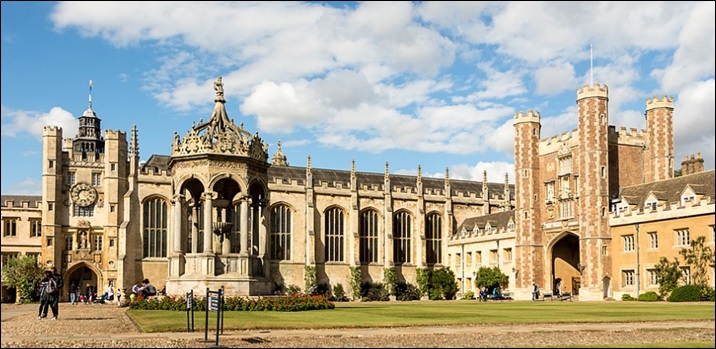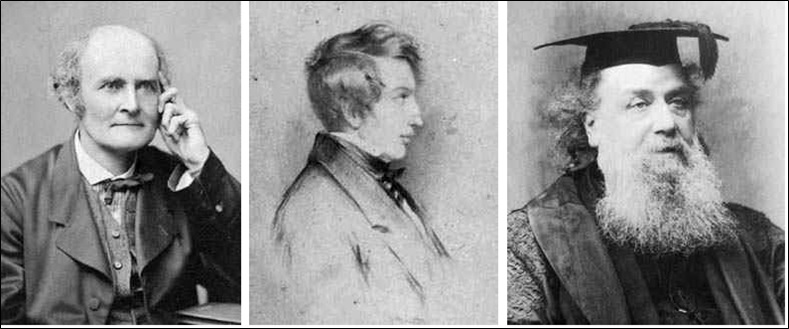The Educational Times Database: Founding of the Journals and Early Contributors
In 1846, a “group of committed private Schoolmasters” in England founded the College of Preceptors, a distinctly nonsectarian, secular institution dedicated to improving the quality of teachers in Britain [Delve 2003, 145]. In practical terms, the College provided training to aspiring teachers and administered exams which, if passed, resulted in a certificate of advanced academic ability and teaching skill. The College published the journal ET as a way to share news of the College itself, to circulate the newest teaching methods to its teacher-readers, to advance the professionalization of the teaching occupation, and to publish the latest research on a variety of scientific topics [Delve 2003, 151]. One of these topics was mathematics. Although the ET’s mathematics section started out as a didactic tool “to demonstrate solid methods to assist both teachers and students,” over time it also accommodated a spirit of competition among sporting mathematicians—among both women and men, professors and lay people [Despeaux 2017, 222]. Mathematics became such a popular topic that the College began issuing the MQ in 1864, which reprinted and expanded much of the ET’s mathematical content.

Figure 4. Images of the May 1861 issue of the ET and one of two 1864 volumes of MQ.
Images collected via the “References” tab at https://educational-times.wcu.edu/.
The ET emerged in the historical setting of Victorian England, an era which began in 1837 when eighteen-year-old Victoria, of the royal House of Hanover, assumed the throne. She succeeded her deceased uncle, the reformer King William IV (r. 1830–1837), and her grandfather King George III (r. 1760–1820). Over a long reign, King George III had presided over the creation of the United Kingdom of Great Britain and Ireland, witnessed industrial revolution, fought the creation of the United States, and won an epic war against Napoleonic France. Following an age of wars and political reforms, Victorian-era Britain was comparatively peaceful. Abroad, however, this was the height of the British empire, with its ruthlessly exploitative policies towards other countries. Yet at the same time, the empire facilitated cultural and intellectual exchange across continents; in mathematics, Britain had much to offer, as the “Victorian period coincided with a revival” of the discipline after “its mid-18th-century slump” [Rice 2011, 3].
The center of mathematical activity in Victorian Britain was Cambridge University, where the College of Preceptor’s Board of Examiners for Mathematics was based. The university had made mathematics a central part of its general curriculum in the mid-eighteenth century, instituting the Mathematical Tripos, a course of study that culminated in the Tripos final examination [Crilly 2011, 19–20]. Each year, the top scorers on the exam had the honor of being ranked as “wranglers,” further sub-ranked from “senior wrangler” to “second wrangler,” “third wrangler,” and so on. Among the early-nineteenth-century Cambridge mathematicians who went on to influence the mathematical renaissance of the Victorian era were John Herschel (1792–1871), George Peacock (1791–1858), and Charles Babbage (1791–1871) [MacTutor]. In the 1812 tripos exams, Herschel and Peacock were senior and second wranglers, respectively. In 1811 the trio had co-founded the Analytical Society at Cambridge, which famously promoted wider adoption of French and German approaches to calculus and algebra in Britain. The activities of Analytical Society members were diverse and impactful even though the group only met formally for about a year. Collectively, the Society translated several continental European mathematics papers into English. Individually, Peacock redefined a branch of mathematics in his 1830 Treatise on Algebra, the same year that Herschel published the well-received Discourse on Natural Philosophy, and around the time that Babbage began designing his “analytical engine, the forerunner of the modern electronic computer” [MacTutor].

Figure 5. A view of Trinity College, Cambridge, where Charles Babbage, John Herschel,
and George Peacock matriculated in the early 1810s [Esteve 2016].
The students of Herschel, Peacock, and Babbage were the ones who, in the early Victorian era, would drive the rise of mathematical research and pedagogy and contribute to the ET’s mathematical section. For example, among the top half-dozen wranglers in the 1837 Tripos exam were J. J. Sylvester (1814–1897), George Green (1793–1842), Duncan Gregory (1813–1844), and A. J. Ellis (1814–1890) [Crilly 2011, 20]. Before his untimely death in 1844, at age thirty, Gregory wrote important papers that expanded on Peacock’s algebraic treatise; he also mentored and influenced the mid-Victorian algebraist George Boole; and he served as founding editor of The Cambridge Mathematical Journal in 1837 [Rice 2011, 4–5; MacTutor]. Although that journal floundered after Gregory’s death, it was revived in 1846 as The Cambridge and Dublin Mathematical Journal, which shared contributors with the ET [Crilly 2011, 24]. J. J. Sylvester, meanwhile, was not granted a degree from Cambridge because his Jewish faith prevented him pledging an oath to the Church of England, as was required of graduates at that time [MacTutor]. In 1841, finally, Sylvester earned degrees at Trinity College, Dublin. But when he began applying for faculty positions, his Cambridge professors Herschel and Babbage served as professional references. The Cambridge network remained strong. About twenty years older than Sylvester and Gregory—in fact, about the same age as the elder teachers Herschel, Peacock, and Babbage—was George Green, a self-taught and non-degreed mathematician (prior to attending Cambridge). Green became an undergraduate at Cambridge only at age forty, in 1833, after some of his published papers gained the attention of the Analytical Society founders [MacTutor].
Another early Victorian mathematician of note, who ranked as senior wrangler in the 1842 Tripos exam, was Arthur Cayley (1821–1895), whom Peacock had tutored [MacTutor]. So impressed with Cayley was Duncan Gregory, then the editor of The Cambridge Mathematical Journal, that he published several of Cayley’s undergraduate papers. In the 1850s, Cayley and J. J. Sylvester collaboratively developed invariant theory in algebra, describing a class of algebraic expressions that retain their basic form even when subjected to transformations [Rice 2011, 6]. Cayley and Sylvester’s theory provides just one example of the importance of this generation of British mathematicians to mathematical innovation. These pioneering Victorian mathematicians—Sylvester, Green, Ellis, and Cayley, although not the prematurely deceased Gregory—were among the ET’s earliest contributors. Thus, the ET quickly became an important forum for innovative British mathematicians. At this juncture, it bears repeating that apart from the great British men of the era, whose careers are already well-documented, women, non-Brits, and many anonymous individuals also found a welcoming forum for their mathematical passions in the ET.

Figure 6. A few of the notable Cambridge mathematicians who matriculated in the early Victorian period.
From left to right: Arthur Cayley, Duncan Gregory, and J. J. Sylvester [MacTutor].